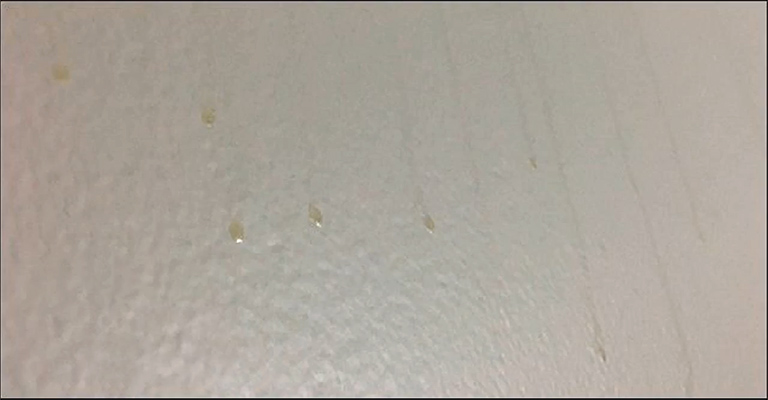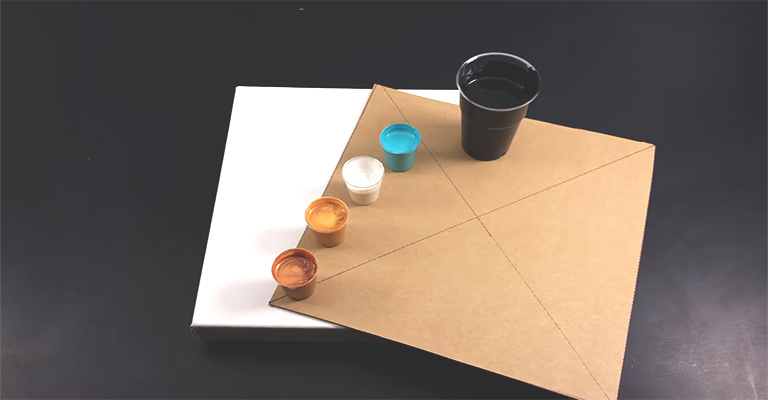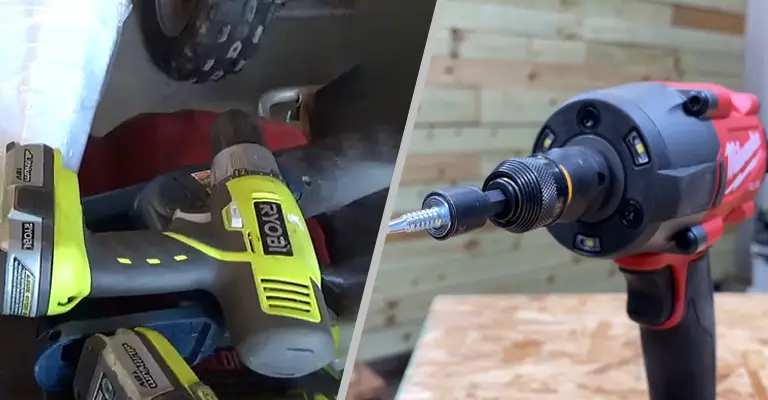How To Change A Door From Inswing To Outswing?
The door is a vital part of any home or business, and it requires a lot of maintenance. A door can be an inswing or an outswing. The majority of doors in the U.S. are traditionally inswing, but an increasing number of homeowners are opting for outswing doors, which swing outward when opened.
An inswing door swings inward and an outswing, as the name suggests, swings outward. The operation of these doors is different and so are the parts required to repair them.
The first step is to consider what you want to change the door from. An outswing can be changed into an inswing by using a hinge that attaches at one end to the wall and the opposite end to the bottom of the door frame.
The opposite can be done as well by positioning a hinge on top of both hinges for this type of conversion, but this will make it impossible for someone outside your home or business to open it.
A door’s swing direction can be changed by a professional. If you have a door that needs to swing in the opposite direction, this article will cover the process of changing it.
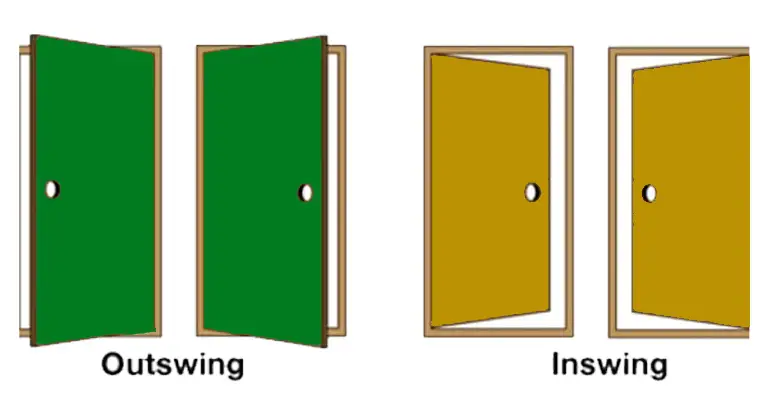
Can A Left Swinging Door Be Made to Swing Right?
Whether a swinging door rotates clockwise or counterclockwise depends on the direction of the hinges on each side. Hinges that turn right are called right-hinged and hinges that turn left are called left-hinged. The position of a door handle can also change which way a swinging door will swing, but this is less common.
Can a left swinging door be made to swing right? This is not a question of physics, but of politics. The theory behind the question is that the cultural bias in American culture swings things to the left.
For example, people are more comfortable with someone being on their left side. On the other hand, people are more comfortable with someone being on their right side when they are driving or walking together on a sidewalk.
This makes it so that doors swing to the left in North America. Doors also swing to the right in Western Europe and Japan due to this cultural preference.
Does It Matter Which Way A Door Swings?
The door can swing in two directions, inward and outward. There are many factors to consider when deciding which way the door should swing, such as the room size, traffic pattern of the room, and the furniture layout.
A few considerations for determining which direction a door should open are that some people have physical disabilities that would make it difficult for them to open a door from one side.
Also, if a person has been standing on one side of a closed but unlocked door for a long time, they will invariably start to feel claustrophobic on that side of the door.
Inward swinging doors are easier to push open from an obstructed area because there is more space on either side of them when they are opened inward. Outward swinging doors allow less clearance around the exit point.
If you want to ask whether or not it matters which way a door swings, then the answer is that it doesn’t really matter. Some people prefer doors to swing in one direction while others prefer doors to open in the opposite direction. It’s all about what you are most comfortable with.
Changing A Door From Inswing To Outswing
Changing inswing doors to outswing doors is as easy as removing the door, replacing the hinges, and rehanging it. Last but not least, you’ll need to remove the old hinges, which we’ll cover as well.
Step 1:
Start by removing the door from the hinges. Remove the bottom caps of the hinges first. To tap it out of place, use a hammer and a screwdriver as a wedge. The process can be made easier if you use a vice grip to grasp the cap.
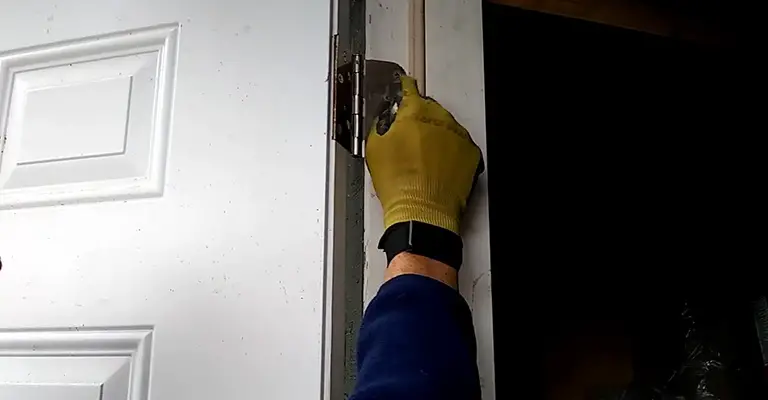
To remove the pins from hinges, tap them with a hammer after sticking a nail punch up the hinge. Make sure all the hinges are in place before removing any pins. The door can tilt if a pin is removed, resulting in other pins becoming trapped.
The door can then be removed once all the pins have been removed. Taking this step alone may be difficult if the door is heavy. Therefore, ask a friend to help.
Last but not least, power drill the hinges and strike plates. You can protect your doorjamb from damage by placing the strike plate around the bolt hole.
Step 2:
For the other side of the door jamb, use a router to cut out the hinge recesses. The next step can be done with a chisel if you don’t have a router.
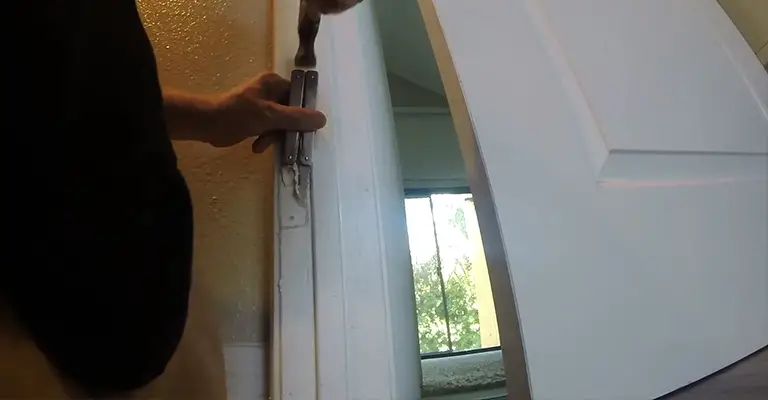
As well as cutting a recess for the strike plate, you will also have to cut a hole for the door bolt. Despite this, we strongly encourage you to wait on this step, and we’ll explain why later.
To install the screws, you will need to drill pilot holes after cutting new recesses. Mark where the hinge plate should go with a pencil when holding it up to the jamb. Make sure that the screw heads go all the way into the hinge plate before screwing it in. They will block the door from fully opening if they extend past the plate.
Step 3:
Filling in the recesses of the opposite side of the doorjamb can be accomplished with wood filler or putty. To make sure the surface is smooth, it should first be cleaned and sanded. Paint the surface after the putty has dried.

Ideally, you should wait until the new hinges are in place before completing this step. The new recess and bolt holes will now be in line with their old counterparts, and you can check your work accordingly.
If you have a doorstop mounted on the wall, you will need to move it as well. Whenever you fix your doorjamb, you can also fix the wall.
Step 4:
Before you rehang the door, make sure any weather-stripping has been removed. Additionally, you will need to use a screwdriver to reverse the knob and striker. To ensure that the door closes properly, the striker should be angled toward the jamb.
The door’s hinge holes may also need to be redrilled depending on the hinges. Once you have finished drilling, you can put the door back in place. Align the hinges on both sides of the door once it has been installed in the jamb. The pins should slide back into place if everything is aligned correctly.
Step 5:

You can now see why we recommend performing this step last. It can now be opened and closed against the jamb after it has been hung again. You will be able to locate exactly where to drill on your doorjamb by looking at the mark left behind by the bolt.
The bolt hole should be drilled, and the recess around it should then be chiseled out with a router. A doorjamb should extend beyond the leading edge of the strike plate when it is held up to it.
Final Words
transforming an interior door from an inswing to an outswing configuration is a practical and sometimes necessary home improvement project. Whether you’re dealing with French doors, a pre-hung door, or any other type of interior doors, understanding the door swing and how to change it is essential. Adhering to building codes, it’s important to consider the new swing direction of your existing door. This change not only enhances the functionality of your space but also allows for better utilization of room layouts. There is a possibility of someone removing the hinge pins and then the door if the hinges are on the outside.
Moreover, the process of how to change a door swing direction, especially for an outswing door, is a task that can rejuvenate the aesthetic and practicality of your home. It’s an opportunity to upgrade to more secure and efficient door hardware. Whether you are working on a single door or multiple doors, the transformation contributes significantly to the overall ambiance and utility of your living space. Remember, while undertaking this project, it’s crucial to ensure that all modifications are in compliance with local building codes to maintain safety and structural integrity.
Related Post – Fixing door latch won’t retract.

